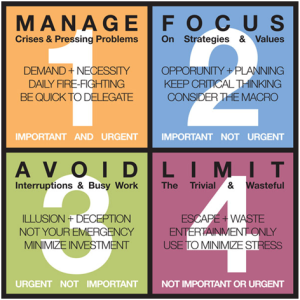Your intuition, like mine, probably tells you happier workers are better workers. When people are happy, they feel more open and creative and produce better results.
That’s more than just instinct — it’s been proven. Economists at the University of Warwick found that while unhappy workers were 10 percent less productive, happy workers were 12 percent more productive.
When companies spend time and resources supporting employees, they have happier teams. For example, employee satisfaction increased 37 percent at Google after the company began focusing on happiness initiatives.
The University of Warwick study also showed that happiness initiatives play a more powerful role in boosting productivity than financial incentives do. Negative emotions can cause tunnel vision, whereas a more positive outlook helps break through the haze of uncertainty that clouds attention to detail, boosting creativity.
What Makes Employees Happy?
Google is not the only major company investing in happiness. Many others have learned that their employees’ happiness translates into improved performance throughout the organization.
Here are four steps you can take to make sure your employees are happy (and ensure your company’s profitability):
1. Hire based on character. Someone once asked me how I made my employees fun. I didn’t make them fun; they were fun when they got here. It’s impractical (even egomaniacal) to think you’re going to drop the hammer one day and everyone is going to suddenly become happy — you have to hire that way.
Employees are happiest when they genuinely like their co-workers and get out of bed each morning excited to see friends at work. Besides a low salary, a boring workplace is the top reason why 68.5 percent of workers say they don’t enjoy their jobs.
Consequently, culture and performance are inextricably tied; a strongly defined culture can drive and inspire employees’ happiness, but their dispositions can also help build or destroy your culture, so hire carefully to maintain both.
Zappos, for example, tries to ensure the character of all its new hires aligns with its company culture. The company even offers new employees $ 2,000 to quit after the first week of training if they don’t feel the job is a good fit for them.
2. Ask employees what they like. People who enjoy their work environment will obviously have a better work experience. But what, specifically, does that entail? Ask candid questions to start a dialogue: What keeps you motivated? What gets you out of bed in the morning?
These are important questions, but a culture of transparency must be established before true, actionable feedback is provided.
A recent study found that when people are asked who drives company culture, answers vary depending on who’s being asked: A third of employees believe it’s them, a third of managers think it’s the executive team, and a third of all respondents think that no one is responsible for creating or ruining culture.
If you sense there isn’t a good vibe in the office, send out a survey addressing what you think might be causing it. Once a month, ask your leadership team three questions: What should I stop doing? What should I start doing? What should I do more of?
3. Listen anecdotally. When employees feel like they’re being heard, they feel valued, and this contributes greatly to their happiness. Take a walk through the office and listen to conversations. When people tell you something makes them unhappy, focus on it.
Our operations and leadership teams want to be in the know about things that cause people to express displeasure or misgivings. However, don’t get stuck on trying to make people happy constantly. If you can easily eliminate some of the things that make people unhappy, start there.
At Warby Parker, the whole team meets weekly to receive updates from each department, which not only lets everyone know what’s going on in the company, but it also provides organic learning opportunities. This is one way the company invests in bringing people together and developing leaders.
During these meetings, new employees introduce themselves and share an interesting or embarrassing fact about themselves. This simple act makes them more memorable to co-workers. Moreover, expressing vulnerability creates connections among staff, establishes trust, and leads to greater collaboration.
4. Be visible and vocal about changes. To keep employees trusting and engaged, always communicate changes by first focusing on the positive effects the changes will have on morale.
For example, after I heard people mention anecdotally around the office that they would enjoy it, we booked a service to visit our office once a month and give staff much-needed massages.
As the event nears, we’ll start hyping it, but not in a way that says, “You had better appreciate this.” We’ll clarify that this gesture is meant only to help them feel happier and more relaxed.
By investing in your employees’ happiness, you feed a positive, thriving culture. And, as this virtuous cycle builds and gains momentum, you’ll enjoy the benefits: The happier they are, the more profitable and productive your business will be.
Business & Finance Articles on Business 2 Community(52)






